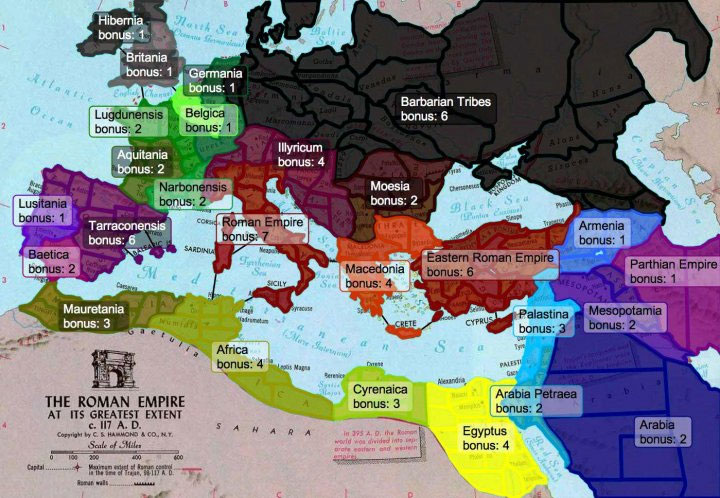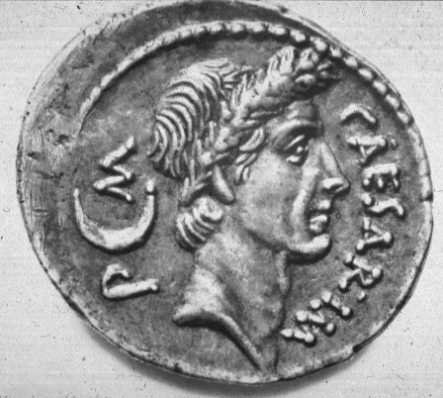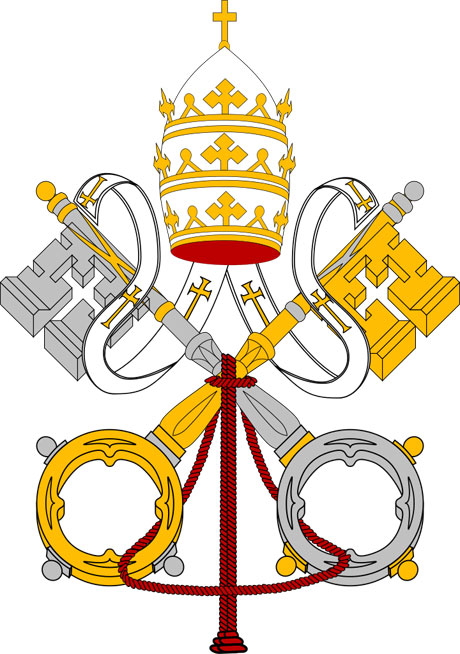Revelation of Jesus Christ
From the KJV 1611 with Strong's Concordance
The antichrist - Pontifex Maximus - The Papacy and it's origin
By Michael Terrence Ampen
Martin Luther made a very perceptive statement when he wrote, "I know that the papacy is none other than the kingdom of Babylon, and the violence of Nimrod the mighty hunter .... The papacy is a vigorous chase led by the Roman bishop, to catch and destroy souls." (quoted by D'Aubigne, (12, page 197])
Ancient history records that the city of Rome was founded by Romulus and his brother Remus. Before the founding of the city of Rome, there stood on the Capitoline hill (one of the seven hills of Rome) a place called "Saturnia" or the "City of Saturn". This was a place where the great Babylonian god Saturn was worshipped. The Latin name "Saturn" is rendered in the Chaldea "Satiir." It was by this name that Nimrod was known as the god of the Chaldean Mysteries. Now, "Satur" means in English the "god of Mystery" or the "hidden god". The word "Satiir" is also very similar to the Hebrew word "Sethur," which means "mystery".
In the early days of the city of Rome this Babylonian worship was suppressed. However, a colony of Etruscans later settled in the neighbourhood of Rome; these Etruscans were earnestly attached to Babylonian idolatry. Even before the Etruscans were incorporated into the growing Roman state, they exercised a powerful influence over the religious worship of the Romans. This led to the formation of a college of Pontiffs, with a Sovereign Pontiff presiding over the college; this was modelled on the Babylonian pattern The Capitoline hill, the original site of Saturnia, became the great high place of the worship of ancient Rome.
Even the name "Latin," which was the language of Rome, carries with it a secret meaning and confirms the Babylonian origins of Rome. The word comes from the Latin word "lateo," which means "lie hid". "Lateo" in turn comes from the Chaldee word "lat," which also means "lie hid." In fact, the names "Lat" and "Saturn" are synonymous and both represent the great god of the Mysteries. In the Egyptian version of the Mysteries a fish god called "Latus" was worshipped, which is clearly just another version of Dagon.
Although Chaldee was the language of the Mysteries of Babylon, the Latin language has a special connection with the Mysteries. For Latin is the "mystery" or "hidden" language. How remarkable it is then to find that the Latin language became central to the worship of the Church of Rome!

Roman Empire at it's greatest extent of dominion c.117 A.D.
Pergamos - Satan's Seat
There is yet a further and more direct connection between the Mysteries of Babylon and ancient Rome. The true legitimate representative of the god of the Mysteries, the deified Nimrod, was the king of Babylon as Sovereign Pontiff. The Bible records in the book of Daniel how the kings of Babylon had around them astrologers, soothsayers and magicians.
Following the death and overthrow of Belshazzar by the Medo-Persian empire under Darius (Daniel 5. 30-31), Daniel was preserved by the grace of God. However, history records that the Chaldean sorcerers and priests were expelled from Babylon and fled to Pergamos, in what is now part of western Turkey. It was at Pergamos that the Chaldean priests found asylum after the fall of Babylon, and there fixed their central college. The kings of Pergamos, who were regarded as gods, were put into the vacant seat left by Belshazzar and his predecessors. They were hailed as the legitimate representatives of the Babylonian god of the Mysteries. It was at Pergamos where the god Aesculapius was worshipped under the form of a serpent. The name "Aesculapius" meant in Greek "instructing snake," but the serpent also symbolised the enlightening of the souls of men by the sun. Thus we see the sun god being worshipped in the form of a serpent, supposedly enlightening mankind as "Lucifer" the shining one. However, the Bible shows the serpent to be the Devil or Satan, who first tempted man to sin against God. It is therefore not surprising for the Lord to refer to Pergamos as "Satan's seat" (Revelation 2. 13). Let us also notice the striking similarity between the name of the god of the Mysteries, "Satur" or "Saturn," with that of the Hebrew name for the Devil, which is "Satan."
As the power of Rome expanded into many parts of Greece, Attalus the last king of Pergamos died in 133 BC and left in his will all the dominions of Pergamos to the Roman people. Thus the kingdom of Pergamos was merged into the dominions of Rome. However, for some years there was no one who could openly lay claim to all the dignity and powers inherent in the title of the kings of Pergamos, namely that of Sovereign Pontiff, The powers of the Roman Pontiffs were therefore somewhat restricted, but this situation changed dramatically with the arrival of Julius Caesar.
The Caesars Reign as Sovereign Pontiff
 Almost all history books record the great conquests of Julius Caesar in France, his two invasions of Britain in 55 and 54 BC, his assumption of the position of Life Dictator over the Roman dominions in 44 BC and his assassination in the Roman Senate. After a period of strife Augustus, who was a relative of Julius Caesar, became Emperor in 27 Be. His rule effectively ended the Roman Republic. It was from Julius Caesar's name that the Roman emperors took their title of "Caesar." However, few are taught that the Caesars held the position of "Pontifex Maximus," that is "Supreme" or "Sovereign Pontiff." This is a very significant fact of history; but it is also very inconvenient to the Church of Rome, for it indicates the origin of the papacy.
Almost all history books record the great conquests of Julius Caesar in France, his two invasions of Britain in 55 and 54 BC, his assumption of the position of Life Dictator over the Roman dominions in 44 BC and his assassination in the Roman Senate. After a period of strife Augustus, who was a relative of Julius Caesar, became Emperor in 27 Be. His rule effectively ended the Roman Republic. It was from Julius Caesar's name that the Roman emperors took their title of "Caesar." However, few are taught that the Caesars held the position of "Pontifex Maximus," that is "Supreme" or "Sovereign Pontiff." This is a very significant fact of history; but it is also very inconvenient to the Church of Rome, for it indicates the origin of the papacy.
Julius Caesar was elected to the position of Pontifex Maximus in 63 BC. He subsequently assumed the position of supreme ruler of the Roman state. Thus he had vested in him all the powers and functions of the Babylonian Pontiff, and he was the true legitimate successor to Belshazzar. Not satisfied with this, he was declared to be Jupiter's incarnation on 25th December 48 BC in the temple of Jupiter in Alexandria. The Encyclopaedia Britannica [81 also says about Julius Caesar: "There are signs that in the last six months of his life he aspired not only to a monarchy in name as well as in fact, but also to a divinity which Romans should acknowledge as well as Greeks, Orientals, and barbarians." Julius Caesar, by laying claim to be divine, followed the pattern of the Kings of Pergamos. The Roman Emperors that followed Julius Caesar were commonly regarded as gods.
Janus and Cybele
In ancient Rome and its dominions there were a multitude of gods that people worshipped. The origins of these gods can be traced to Babylon as representing either Nimrod or his wife.
However, there are two that are of particular importance to the present subject of our inquiry; namely, Janus and Cybele. These had been worshipped in Rome long before the birth of Christ.
The goddess Cybele, who was always associated with Janus, was known in pagan Rome as "Domina" or "The Lady". Cybele was also represented as wearing a tower or turret as a crown, which was on account of her being the first to erect towers in cities. Hislop shows that this honour was ascribed to Semiramis, the first queen of Babylon, and that the crown of towers is symbolic of Semiramis deified as the Queen of Heaven. Thus the worship of Cybele was simply the worship of Semiramis, the wife of Nimrod.
Cybele can also be identified with Diana of the Ephesians. Diana was represented in various abominable forms signifying fertility, but like Cybele had the crown of towers on her head. Furthermore, Diana was sometimes represented as part woman and part fish, in a similar manner to Dagon.
The Keys

Janus was worshipped in Rome as the god of doors and hinges, and was called "the opener and shutter." "This had a blasphemous meaning, for he was worshipped at Rome as the grand mediator. Whatever important business was in hand, whatever deity was to be invoked, an invocation first of all must be addressed to Janus, who was recognised as the "God of gods," in whose mysterious divinity the characters of father and son were combined, and without that no prayer could be heard - the "door of heaven" could not be opened." Therefore, Janus was represented with a head with two faces, one old and one young, and holding a key in his hand. In like fashion the goddess Cybele also carried a key.
The worship of Janus prevailed in Asia Minor at the same time as the Lord commanded the apostle John to write to the seven churches. Thus we read in the book of Revelation, "And to the angel of the church in Philadelphia write; These things saith he that is holy, he that is true, he that hath the key of David, he that openeth, and no man shutteth; and shutteth, and no man openeth." (Revelation 3. 7) Here the Lord confirms that he is the one true God, who alone opens and shuts the door of heaven.
As the great head of the Mysteries in Rome, the Sovereign Pontiff or "Pontifex Maximus" held the key of Janus and the key of Cybele, which were tokens of his position as their earthly representative. The keys became the symbols of the authority of the Pontifex Maximus. He was known by the Latin title "Pater Patrum," which means in English "Father of Fathers". He was also addressed by the title "Your Holiness".
The Interpreter of the Mysteries
The Pontifex Maximus had one more title that we must consider here. This is a mysterious one, variations of which were used by heads of the Mysteries in other parts of the ancient world. The priest or Pontiff who explained the Mysteries to the initiated was known as the "Interpreter," which is in Chaldee (the real language of the Mysteries) "Peter". Hislop explains about Peter the Interpreter as follows: "As the revealer of that which was hidden, nothing was more natural than that, while opening up the esoteric [i.e. intended only for the initiated] doctrine of the Mysteries, he should be decorated with the keys of the two divinities whose mysteries he unfolded. Thus we may see how the keys of Janus and Cybele would come to be known as the keys of Peter, the "interpreter" of the Mysteries."
We even find something similar in the book of Genesis. Whilst Joseph was in prison with Pharoah's butler and baker, they both dreamed a dream which they could not understand. They said to Joseph, "We have dreamed a dream, and there is no interpreter of it." (Genesis 40. 8) Remembering that Hebrew and Chaldee are related languages, it is remarkable to note that "interpreter" is a translation of the Hebrew word "pathar", which is very similar to the Chaldee "Peter." The god of the Mysteries was also known by the title "Peter-Roma," which is Chaldee for the "Grand Interpreter". In the next chapter we will see how "Peter-Roma" the Grand Interpreter of the Mysteries, was transformed by the papacy into the Apostle "Peter of Rome."
Behold, the mystery of iniquity!
"The Roman Catholic church is the MYSTERY BABYLON THE GREAT THE MOTHER OF HARLOTS. The Papacy is the seat of the Antichrist. The Pope is the 'Man of Sin'." says Terrence Ampem (War On Error).
Note:
The Chaldean word for interpreter is H6590 p@shar {pesh-ar'} (Chaldee); correpsonding to H6622; to interpret.
The Hebrew word for interpreter is H6622 pathar {paw-thar'} A primitive root; to open up, that is, (figuratively) interpret (a dream).
Related: The Two Babylons - by Alexander Hislop in PDF Format